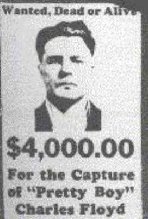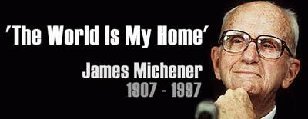
Sunglasses or sun glasses (informally called shades or sunnies; more names below) are a form of protective eyewear designed primarily to prevent bright sunlight and high-energy visible light from damaging or discomforting the eyes. They can sometimes also function as a visual aid, as variously termed spectacles or glasses exist, featuring lenses that are colored, polarized or darkened. In the early 20th century, they were also known as sun cheaters (cheaters then being an American slang term for glasses).
Since the 1930s, sunglasses have been a popular fashion accessory, especially on the beach.
The American Optometric Association recommends wearing sunglasses that block ultraviolet radiation (UV) whenever a person is in the sunlight to protect the eyes from UV and blue light, which can cause several serious eye problems. Their usage is mandatory immediately after some surgical procedures, such as LASIK, and recommended for a certain time period in dusty areas, when leaving the house and in front of a TV screen or computer monitor after LASEK. It is important to note that dark glasses that do not block UV radiation can be more damaging to the eyes than not wearing eye protection at all, since they tend to open the pupil and allow more UV rays into the eye.
Since prehistoric times until the spread of contemporary UV-shielding spectacles against snowblindness, Inuit made and wore Snow goggles of flattened walrus or caribou ivory with narrow slits to look through to block almost all of the harmful reflected rays of the sun. In many different forms and with many different materials, the indigenous peoples of North America and northern Asia crafted highly efficient equipment to protect their eyes against the damaging effects of strong sunlight in icy circumstances.
From the later 19th century short references of sunglasses have been found in reports, such as by a Walter Alden in 1866, who wrote of soldiers using during the American Civil War (1861-5) 'shell spectacles' (verres de cocquille) to protect against sunlight on long marches, or by the British T. Longmore reporting in The Optical Manual (1885) of soldiers in Egypt being equipped with tinted glass 'eye protectors'. By 1895 sunglasses were mentioned in advertisements, such as in The Sioux City Journal (on June 13).
In 1913, Crookes lenses were introduced, made from glass containing cerium, which completely blocked ultraviolet light. In the early 1920s, the use of sunglasses started to become more widespread, especially among movie stars. Inexpensive mass-produced sunglasses made from celluloid were first produced by Sam Foster in 1929. Foster found a ready market on the beaches of Atlantic City, New Jersey where he began selling sunglasses under the name Foster Grant from a Woolworth on the Boardwalk. By 1938, Life magazine wrote of how sunglasses were a "new fad for wear on city streets ... a favorite affectation of thousands of women all over the U.S." It stated that 20 million sunglasses were sold in the United States in 1937 but estimated that only about 25% of American wearers needed them to protect their eyes. At the same time, sunglasses started to be used as aids for pilots and even produced for the gaining aviation sector, eventually adding to sunglasses as cultural icons and to their popularity. Polarized sunglasses first became available in 1936 when Edwin H. Land began experimenting with making lenses with his patented Polaroid filter. In 1947, the Armorlite Company began producing lenses with CR-39 resin.
At present, Xiamen, China is the world's largest producer of sunglasses with its port exporting 120 million pairs each year.
Sunglasses sold in the United States are regulated by the Food and Drug Administration and are required to conform to safety standards. The U.S. standard is ANSI Z80.3-2001, which includes three transmittance categories. According to this standard, the lens should have a UVB (280 to 315 nm) transmittance of no more than one per cent and a UVA (315 to 380 nm) transmittance of no more than 0.3 times the visual light transmittance. The ANSI Z87.1-2003 standard includes requirements for basic impact and high impact protection. In the basic impact test, a 1 in (2.54 cm) steel ball is dropped on the lens from a height of 50 in (127 cm). In the high velocity test, a 1/4 in (6.35 mm) steel ball is shot at the lens at 150 ft/s (45.72 m/s). To pass both tests, no part of the lens may touch the eye.
If you want to read more, go here: https://en.wikipedia.org/wiki/Sunglasses
- 1 cup finely crushed cheese crackers
- 2 tablespoons sesame seeds
- 1 teaspoon chopped fresh parsley
- 1/2 teaspoon salt
- 1/4 teaspoon black pepper
- 4 boneless, skinless chicken breasts
- 1/2 cup butter, melted
- Preheat oven to 350º. Coat a baking sheet with cooking spray.
- In a shallow bowl, combine cracker crumbs, sesame seeds, parsley, salt, and black pepper. Place butter in another shallow dish. Dip chicken in butter, then dip in cracker-crumb mixture, coating evenly on both sides. Place chicken on baking sheet.
- Bake 20 to 25 minutes or until no pink remains in center and chicken is golden.





![https://blogger.googleusercontent.com/img/b/R29vZ2xl/AVvXsEhTgIYBQkLB1JJPkkJNrIaqzWxK0LsUlq3zuByeeD502nHwYizAaDBeDKeWaI8CXNJQ-iqShjqlIyD2z8Dz3Kt4hbDFM9hV2W0rxYVmugWeJ8jQUojZwd-ck-GWfz-sJpG96sDFbb3CoD4/s1600/Morgan%20Fairchild%202_thumb[2]MA28936525-0010.jpg https://blogger.googleusercontent.com/img/b/R29vZ2xl/AVvXsEhTgIYBQkLB1JJPkkJNrIaqzWxK0LsUlq3zuByeeD502nHwYizAaDBeDKeWaI8CXNJQ-iqShjqlIyD2z8Dz3Kt4hbDFM9hV2W0rxYVmugWeJ8jQUojZwd-ck-GWfz-sJpG96sDFbb3CoD4/s1600/Morgan%20Fairchild%202_thumb[2]MA28936525-0010.jpg](https://ecp.yusercontent.com/mail?url=https%3A%2F%2F1.bp.blogspot.com%2F-Tk_xx3RklPA%2FTywBWVa0izI%2FAAAAAAAAR2I%2FolVUO9g5l48%2Fs1600%2FMorgan%252520Fairchild%2525202_thumb%255B2%255DMA28936525-0010.jpg&t=1675358616&ymreqid=c419e3ce-461a-657f-2c1b-290342010000&sig=snRPE.rl12GrGXF4xzDW6A--~D)
On February 3rd, honor the path that female doctors have paved since 1849 as we recognize National Women Physicians Day.
This day marks the birthday of Dr. Elizabeth Blackwell, the first woman to receive a medical degree in the United States in 1849. Dr. Blackwell initiated the movement that helped women gain entry and equality in the field of medicine.
If society will not admit of a woman’s free development, then society must be remodeled. ~ Dr. Elizabeth Blackwell
The day celebrates the courage of Elizabeth Blackwell and the accomplishments of female physicians everywhere. At the same time, the day strives to bring improvements to the workplace for the growing number of women physicians entering the field of medicine.
While the number of women doctors gradually increased in the last two decades, 2016 statistics show 35% of physicians are women. A study published in JAMA Internal Medicine last year revealed that women doctors earn on average 8% less than their male counterparts. That discrepancy, along with nearly a third of women physicians reporting sexual harassment in the workplace and a large majority experiencing gender bias. Clearly, there is still work to be done.
National Women Physicians Day recognizes the strides made by generations of women doctors. The observance also recognizes that we must strike a balance that allows women to succeed professionally while supporting a family. Join National Women Physicians Day in celebrating these accomplishments and supporting women physicians as colleagues, friends, family, and doctors.






1 comment:
DANG!! Wish I had read this earlier! Just had an appointment with our lady doctor this morning. Last year I sent her a message on this day thanking her for all she does for John and me. Had I known, I would have thanked her in person today! :(
XO Trisha
Post a Comment